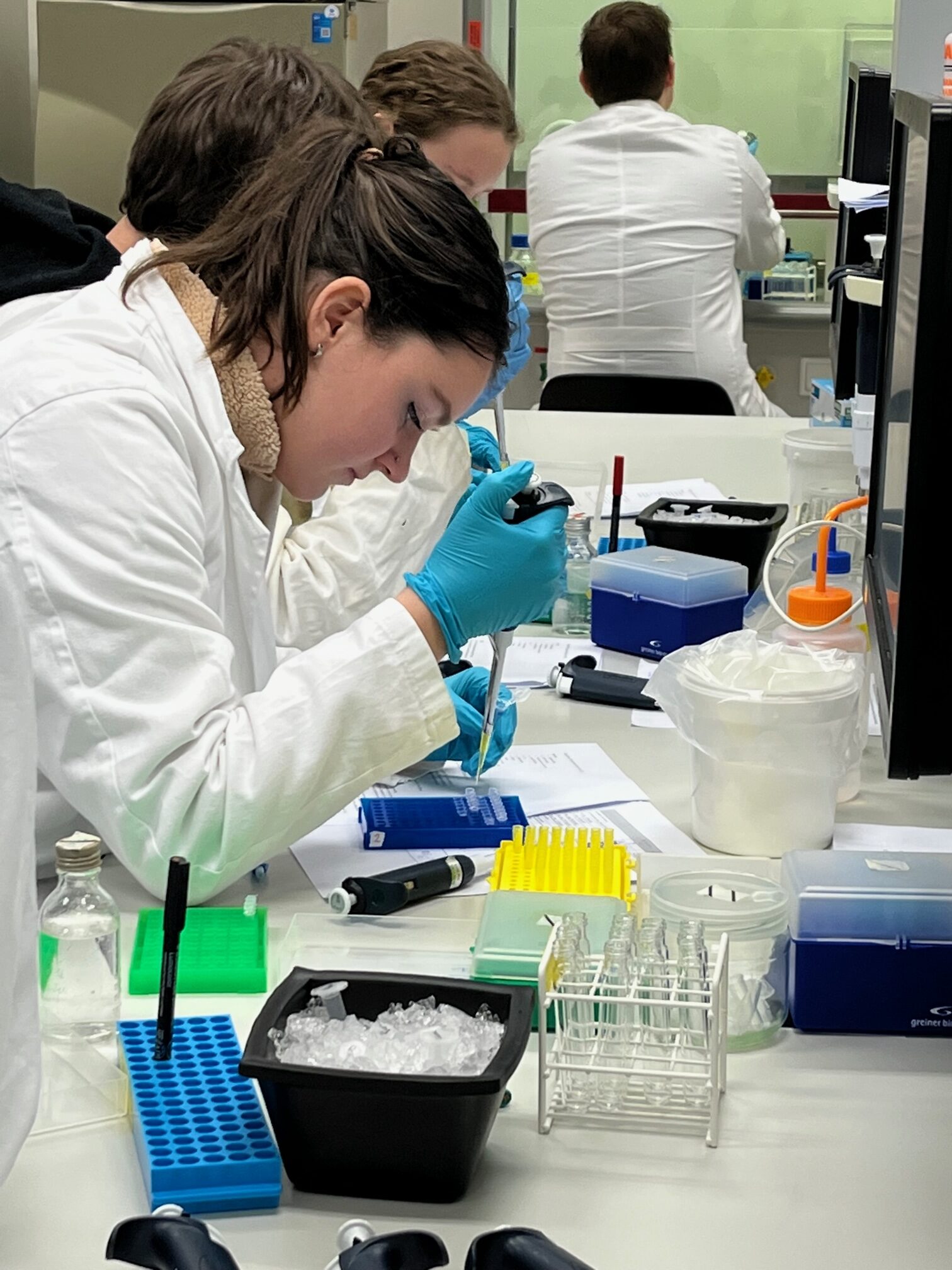During the course ‘Frontiers in Medical and Veterinary biology’, students follow an interesting practical programme on entomology, virology and nematology topics. Sander Koenraadt, Rody Blom and Charlotte Linthout were assisting the students this year in discovering commonly used molecular techniques in the field of medical entomology. This year’s practical focus was on the detection of the West Nile and Usutu viruses in overwintering mosquitoes. Want to know more about the contents and results of this course? Then read along!
West Nile and Usutu virus detection in overwintering Culex pipiens mosquitoes
West Nile virus (WNV) and Usutu virus (USUV) are both mosquito-borne viruses circulating in the Netherlands, mainly affecting birds. The first detection of Usutu virus in the Netherlands was in 2016 and since then, it has been detected every consecutive year. West Nile virus, however, has only been detected in the summers of 2020 and 2022. Both viruses are very similar in their ecology and it is presumed that they persist during winter via so-called ‘diapausing’ Culex pipiens mosquitoes.
Culex pipiens mosquitoes, consist of two biotypes, namely pipiens and molestus. These two biotypes together can form hybrids. Although the two biotypes are visually indistinguishable, they do have differences in their behaviour. One of the main differences is their overwintering behaviour. Culex pipiens, biotype pipiens will go into diapause in winter, whereas the biotype molestus mainly remains active.
At the end of autumn, the last summer generation of Cx. pipiens biotype pipiens mosquitoes are triggered by low temperatures and short winter days to increase their sugar uptake to produce lipid reserves. During winter, these mosquitoes will remain inactive, and they use their lipid reserves to survive winter. Insight into this fat content and the overwintering biology is important, as it determines the survival of Cx. pipiens biotype pipiens mosquitoes.
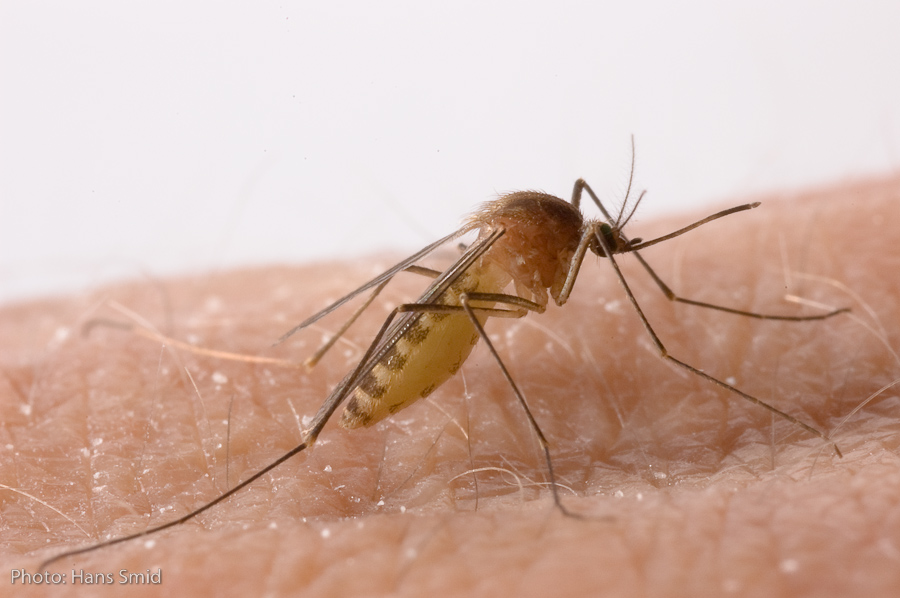
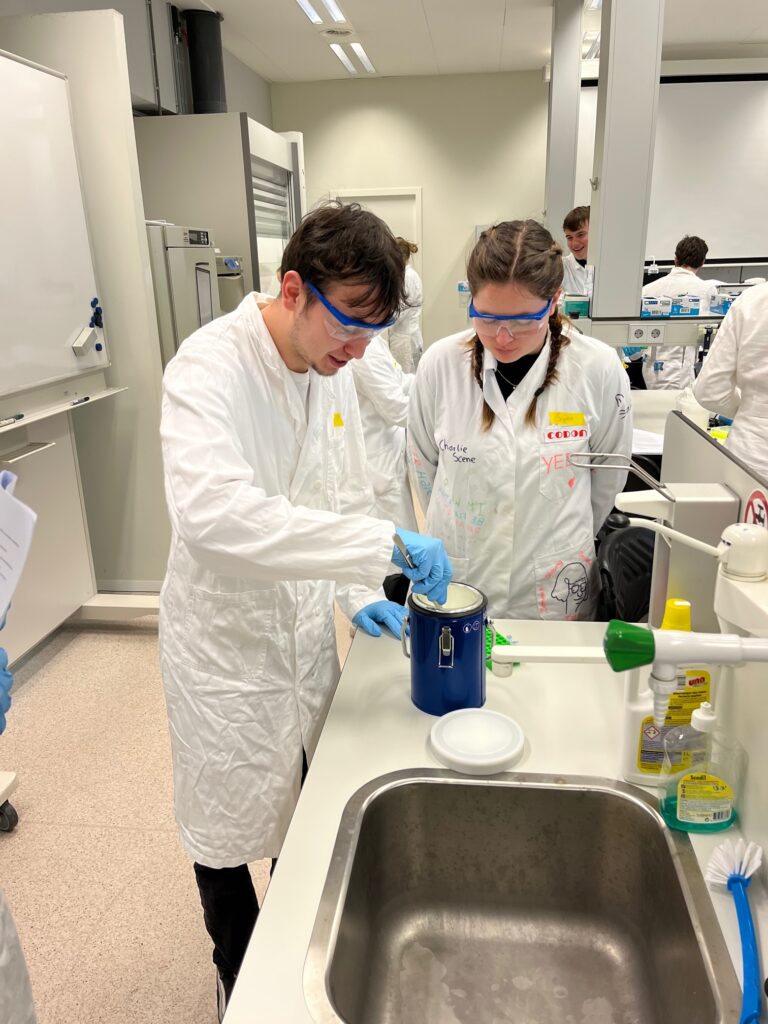
The students carried out a total of three experiments, for which they looked into the presence of the West Nile and Usutu viruses, the fat content, and the biotype of field-collected overwintering mosquitoes.
Experiment 1: Presence of West Nile and Usutu virus in overwintering Culex pipiens mosquitoes
First, the students looked for USUV and WNV presence in diapausing Cx. pipiens. Each group of students received a total of 30 mosquitoes, collected from the bunkers at the ‘Nieuwe Hollandse Waterlinie’. They were collected in November 2022 and were thus expected to be in diapause. Next, the mosquitoes were separated into six pools of five mosquitoes each. For each of these pools, molecular techniques (RNA extraction, cDNA synthesis, PCR and gel electrophoresis) were used to detect whether WNV and/or USUV were present in the samples. After double-checking all the samples, we can safely say that the students did not find any WNV or USUV in their overwintering mosquitoes this season. This is in line with previous findings of Rody Blom.
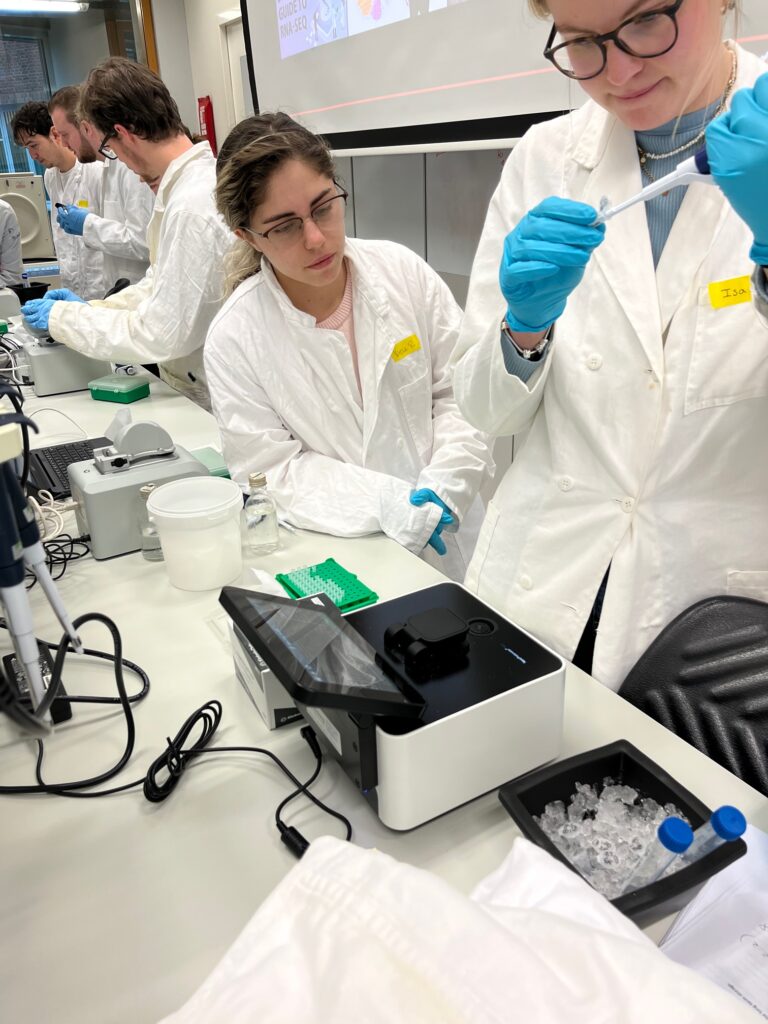
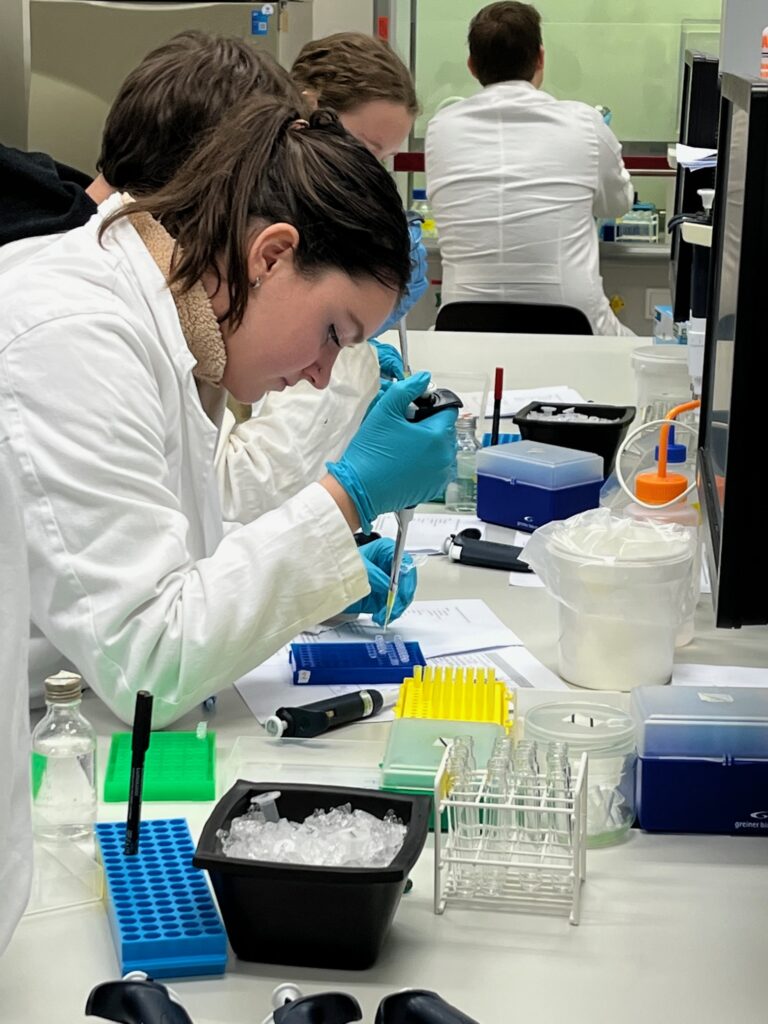
Experiment 2: determining the fat content of overwintering mosquitoes
Secondly, each group of students analysed the lipid content of ten mosquitoes. Five of these mosquitoes also originated from the bunkers at the ‘Nieuwe Hollandse Waterlinie’. The other five mosquitoes originated from our rearing facilities and were reared at a comfortable 23 degrees Celsius. This last group was not expected to be in diapause and was therefore used as a control group for this experiment.
After extracting the unsaturated lipids from all the individual mosquitoes and adding sulfuric acids and vanillin-phosphoric acid reagents, the samples changed colour due to a chemical reaction. As a result of this, we ended up with samples that revealed 50 shades of pink (photo!). The darker the colour of the sample, the higher the lipid content of the mosquito. The optical density of these samples was then measured with a spectrophotometer and calculated using a standard lipid curve.
With this experiment the students could indeed prove that the mosquitoes from the bunkers had a significantly higher fat content compared to the mosquitoes from our rearing facilities, indicating that the field-collected mosquitoes were ready to survive the cold winter months.
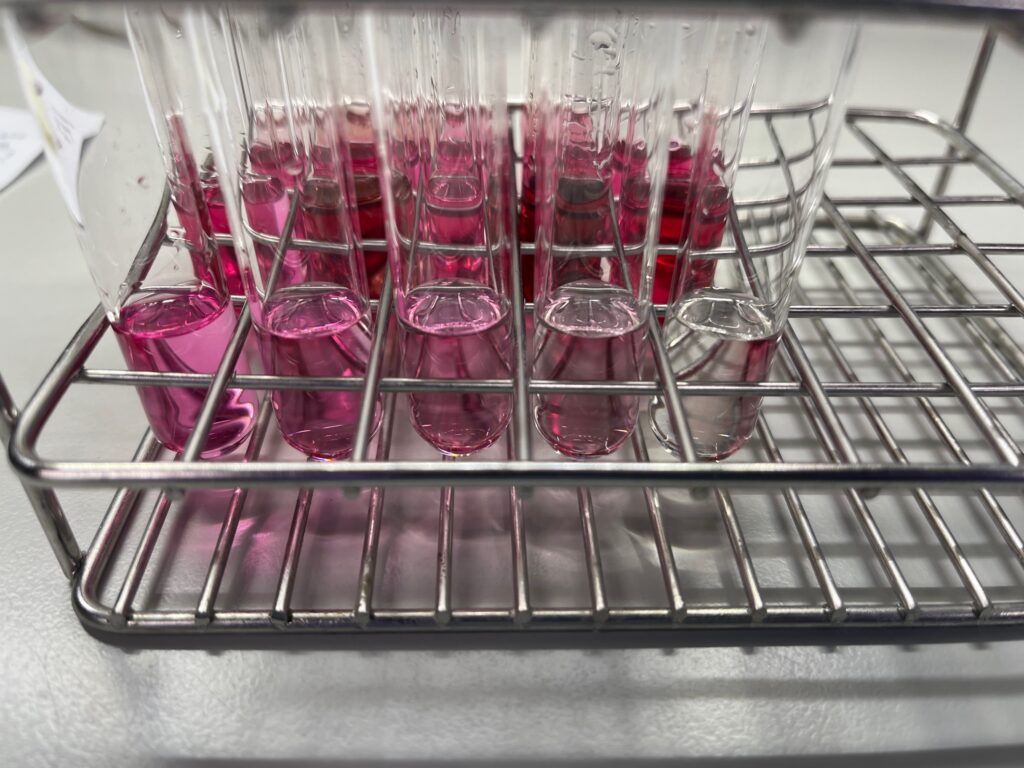
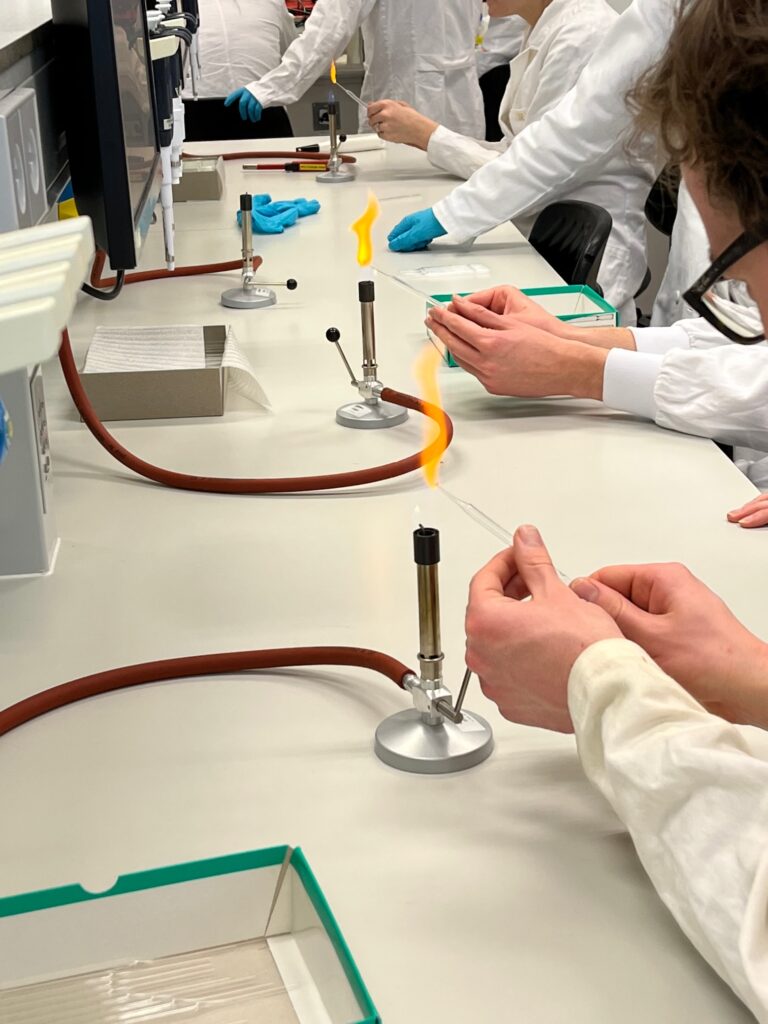
Experiment 3: qPCR analysis of the biotype of overwintering mosquitoes
Lastly, the students’ third experiment aimed to identify the biotype composition of diapausing Culex pipiens mosquitoes, collected in the bunkers along the ‘Nieuwe Hollandse Waterlinie’. Therefore, the students extracted the DNA from the legs of ten mosquitoes using ammonium hydroxide and later used this DNA in a quantitative PCR reaction to finding out to which biotype the mosquitoes belonged.
Not surprisingly, this experiment showed that more than 75% of the collected mosquitoes belonged to the pipiens biotype, while only about 17% belonged to the molestus biotype and 7% were hybrids of the two biotypes. These results are very similar to previous studies conducted in the Netherlands, which looked into the biotype composition of overwintering mosquitoes. With these results, the students have proven that it is indeed the pipiens biotype that will look for shelter during the cold winter months.
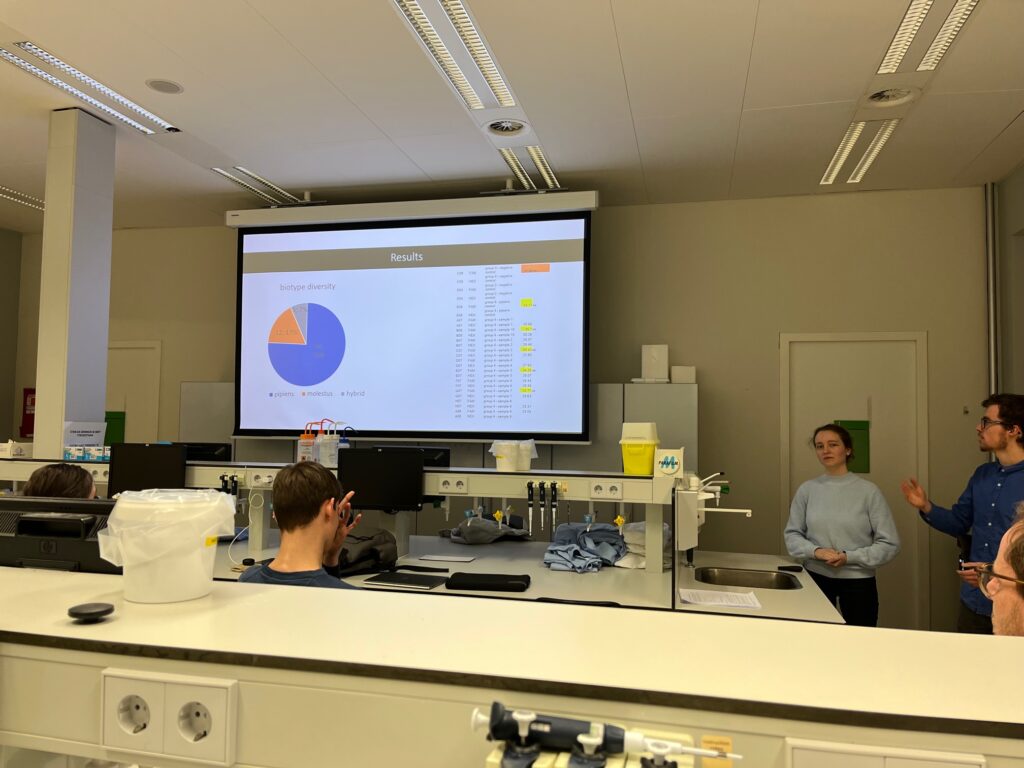
Overall, the students that participated in the entomology practical produced a lot of interesting data which was in line with previously published data by our group. We hope that the students learned a lot about mosquitoes in general and enjoyed the experiments and maybe we may welcome them again in one of the other related classes or as bachelor or master thesis students in our group.
